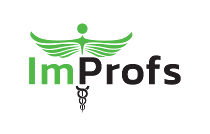Facebook for inbound marketing
Inbound marketing through Facebook can be a powerful way to bring your content and services to the attention of the right audience. Here are some important aspects to consider when using Facebook for your inbound marketing strategy:
1. Targeted Ads Facebook offers extensive opportunities to target your ads to specific user demographics, interests and behaviors. This allows you to show your ads to people who are likely to be interested in what you have to offer. Use these opportunities to accurately define and reach your target audience.
2. Content Promotion Promote your valuable content, such as blogs, free tools and webinars, through sponsored posts and ads. Make sure the content you promote is relevant and valuable to your target audience so that they are inclined to click on it and interact with it.
3. Using Facebook Pixel The Facebook Pixel is an analytics tool that allows you to measure the effectiveness of your ads by understanding the actions people take on your website. By installing the Pixel, you can set up retargeting campaigns and show ads to people who have already visited your website or taken a particular action.
4. A/B Testing Experiment with different ad formats, texts, images and audiences to see what works best. Run A/B tests to understand which approach produces the most engagement and conversions.
5. Community Building Build a community around your brand by creating a Facebook page and/or group where you regularly share valuable content and interact with your followers. Encourage discussions and actively respond to comments and questions to build rapport with your audience.
6. Regular Updates and Follow-up Stay in touch with your target audience by posting regular updates and sharing valuable information. Use email marketing and retargeting ads to draw people who have previously shown interest back to your content and offers. Maintaining this connection is crucial, especially since the sales cycle on Facebook can be longer.
7. Analyze and Optimize Use Facebook Insights and other analytics tools to monitor the performance of your campaigns. Analyze the data to understand which content and ads perform best and optimize your strategy accordingly.
Sample Strategy for Facebook Inbound Marketing
1. Targeting and Ads
– Identify your ideal customer profile based on demographics, interests and behaviors.
– Create multiple ad sets with different creatives and message variations.
2. Create and Promote Content
– Write a series of valuable blog posts, create a free e-book or host a webinar.
– Use Facebook Ads to promote this content to your defined target audience.
3. Engagement and Community Building
– Post regular updates and engage with your followers on your Facebook page.
– Start a Facebook group to create a community and stimulate discussions.
4. Retargeting and Follow-up
– Use Facebook Pixel to retarget visitors to your website with targeted ads.
– Stay in touch through email marketing and retargeting to nurture leads until they are ready to convert.
Conclusion Inbound marketing through Facebook requires a strategic approach where you carefully define your target audience, promote valuable content, and use ongoing interaction and follow-up. By using Facebook’s advanced targeting capabilities and analytics tools, you can effectively reach the right people and build long-term relationships that ultimately lead to conversions.
Contact us for more information! Email info@improfs.nl or use the comment form below.






